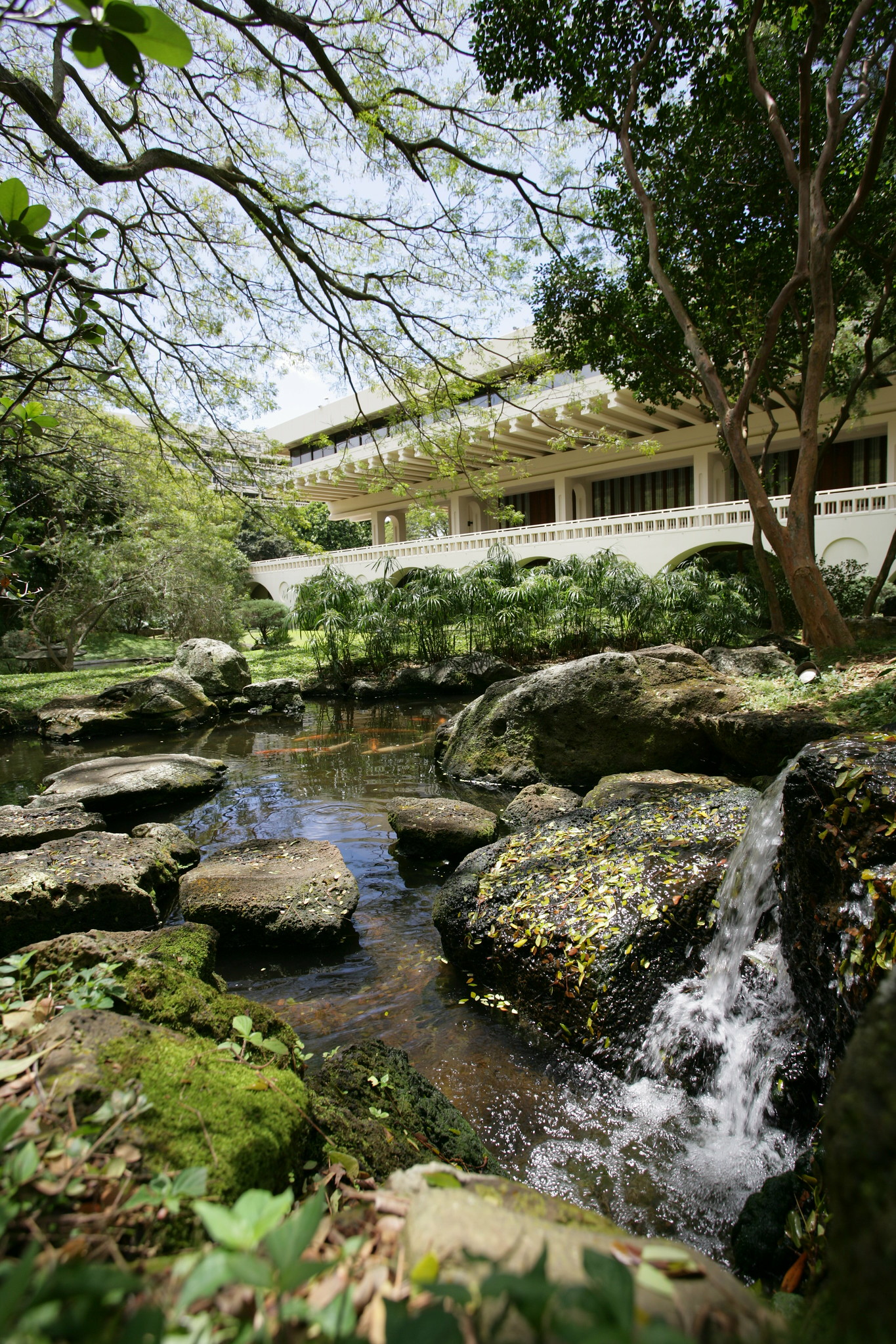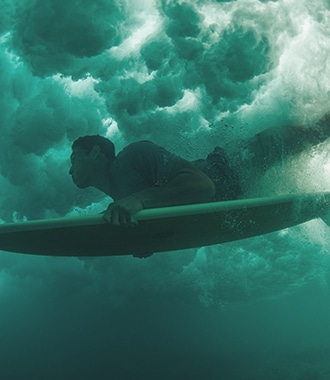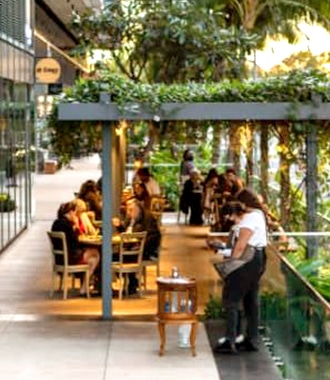East-West Center: Bridging the Pacific

In the late 1950s, during some of the most sweltering moments of Cold War anxiety, distrust, and xenophobia in the United States, professors at the University of Hawai‘i sought to bridge the divide between East and West. With support from U.S. Senator Lyndon Johnson and Hawaii’s Territorial Delegate to Congress John A. Burns, stakeholders envisioned an innovative idea for the time—an international university that would promote cultural exchange, dialogue, diplomacy, positive relations, and understanding between the United States, Asia, and Pacific Island nations.
Because of Hawaii’s strategic location in the middle of the Pacific Ocean, Congress and the U.S. Department of State concluded that Hawai‘i held special advantages for a national institute and education center with an Asia-Pacific focus, namely the state’s diverse cultural makeup that couldn’t be duplicated anywhere else in country. For an island that once marked the beginning of America’s involvement in World War II, O‘ahu was now being thought of as a place of regional understanding and cultural exchange. An education center on O‘ahu could help Americans better understand peoples from Asia and the Pacific, and also for the peoples of these regions to better understand America.
“At the Center itself, people will engage actively in what is perhaps the most precious freedom of all—the freedom to pursue ideas,” John Burns said in a 1959 address to a Senate Subcommittee. “One real strength of the Center is that it is not a one-sided institute of propaganda. People will meet there on humanly equal terms and will engage in genuine dialogue from which each will learn and to which each will contribute.”
“At that time in history, Hawai‘i was the best place to do it,” said the late U.S. Senator Daniel K. Inouye. “In Hawai‘i, you found a better blending of ethnic groups and better understanding between them.”
An initial $10 million Congressional appropriation supported the creation of the center. In September 1960, the East-West Center’s first student, Abdul Q. Zia, arrived from Pakistan. Construction of the East-West Center campus, which is located adjacent to the University of Hawai‘i at Mānoa, began in 1963 under the carefully orchestrated hand of acclaimed architect I. M. Pei.
As a young American architect born in China, Pei’s work on the East-West Center was one of his earlier projects. It remains renowned for its stunning midcentury design, huge concrete overhangs that were technologically advanced at the time, and the harmonious, monumental quality of the way Jefferson Hall and Kennedy Theatre echo each other. Although the center was originally governed by the University of Hawaii, in 1975, it became a public nonprofit, with a governing board appointed by the state governor and the US Secretary of State.
Today, a global approach to learning seems common sense for our highly connected world; however, at the time, it was a novel idea to bring East and West together on an equal footing. At the heart of the Center’s mission and success remains the student experience. Through programs of cooperative study, training and research, the Center promotes learning together, and from each other. Fully committed to diversity, inclusion, and the vision of building a peaceful, prosperous and just Asia-Pacific community, the East-West center engenders flexible thinking and a large-scale approach to problem solving. Students return home with a grand global perspective of current issues.
More than 65,000 students have taken part in East-West Center programs since 1960. Alumni have become presidents and prime ministers, members of parliaments, senior journalists, successful educators, and international business executives. Beyond accolades and titles, as the students engage with each other to foster positive and supportive lifelong relationships and networks, they also tap into aloha spirit—the cornerstone of the East-West Center and one of its core reasons for being located in Hawai‘i.






